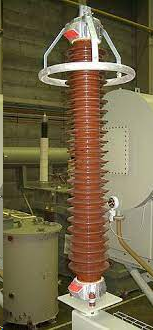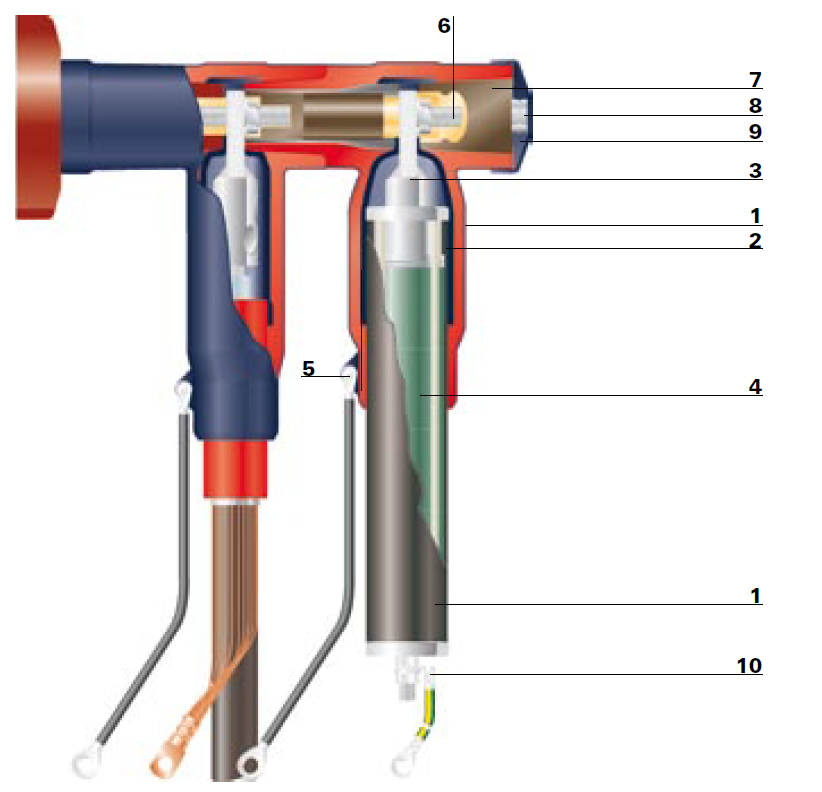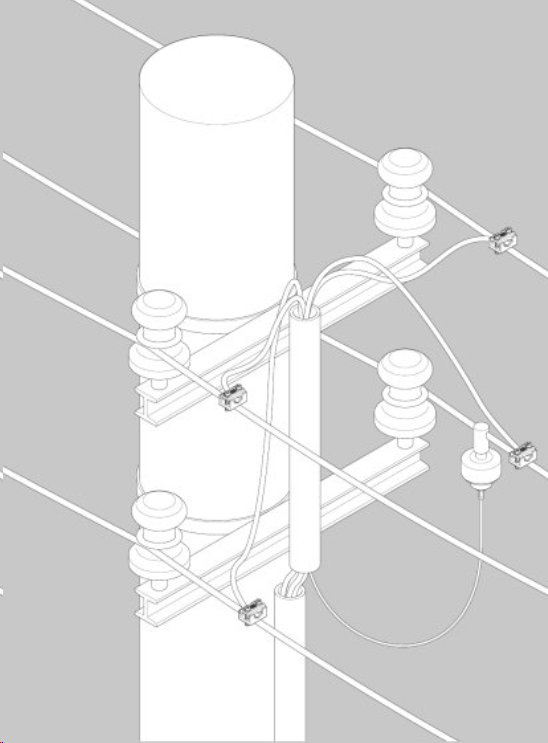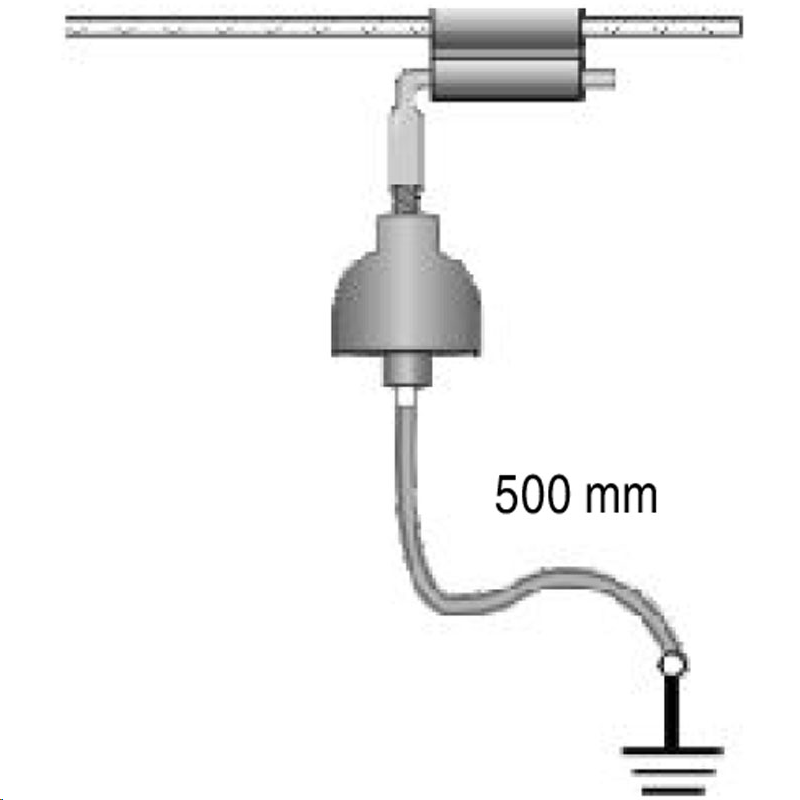Short-term voltages can occur in the mains which considerably exceed the normal operating value. A distinction is made between external overvoltages, e.g. caused by lightning with several megavolts, and internal overvoltages caused by switching operations. Surge arresters are used to limit the overvoltages to a level that is not dangerous for the equipment. The simplest form of a surge arrester is spark gaps, which are located, for example, on the insulators of an overhead line. When overvoltages occur, the air gap between them is punctured.
Surge arresters are usually installed on overhead lines together with the termination (Pothead) at the transition to the cable. At the same time, they are also installed in installations for the protection of transformers. This is usually done close to the transformer or directly together with an appropriate termination (CableTermination).
See the MVSurgeDiverter scheme.
|
|
|
|
Surge arrester (extra-high voltage)
|
|
|
|
|

|
Surge arrester (high voltage)
|
|
|
|
|

|
Surge arrester (medium voltage)
The picture shows a medium voltage terminal with a surge arrester on the right side with the connection on the ground side.
|
|
|
|
|

|
Surge arrester (low voltage)
|
|
|
|
|

|
Surge arrester (lighting)
Analogous to low voltage
|
|








